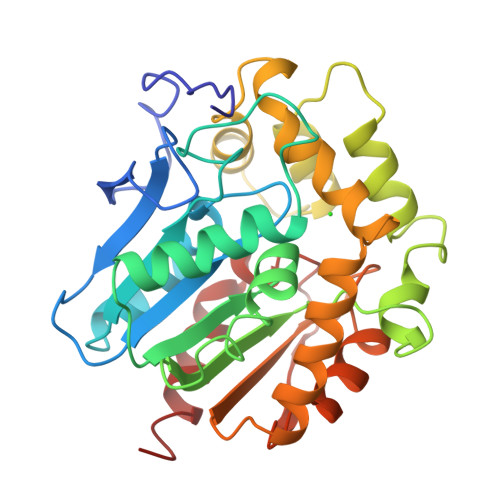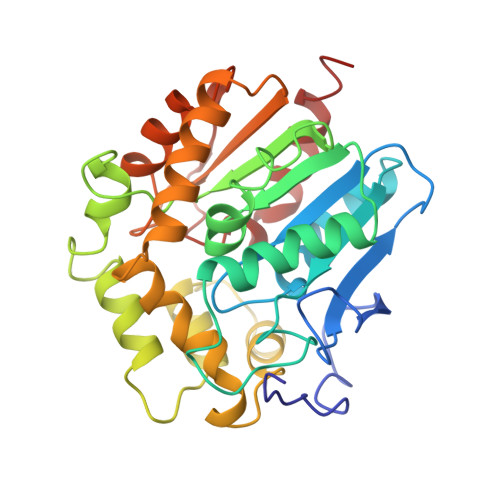Crystallographic and fluorescence studies of the interaction of haloalkane dehalogenase with halide ions. Studies with halide compounds reveal a halide binding site in the active site.
Verschueren, K.H., Kingma, J., Rozeboom, H.J., Kalk, K.H., Janssen, D.B., Dijkstra, B.W.(1993) Biochemistry 32: 9031-9037
- PubMed: 8369276
- DOI: https://doi.org/10.1021/bi00086a008
- Primary Citation of Related Structures:
1EDB, 1EDD, 2EDA, 2EDC - PubMed Abstract:
Haloalkane dehalogenase from Xanthobacter autotrophicus GJ10 catalyzes the conversion of 1,2-dichloroethane to 2-chloroethanol and chloride without use of oxygen or cofactors. The active site is situated in an internal cavity, which is accessible from the solvent, even in the crystal. Crystal structures of the dehalogenase enzyme complexed with iodoacetamide, chloroacetamide, iodide, and chloride at pH 6.2 and 8.2 revealed a halide binding site between the ring NH's of two tryptophan residues, Trp-125 and Trp-175, located in the active site. The halide ion lies on the intersection of the planes of the rings of the tryptophans. The binding of iodide and chloride to haloalkane dehalogenase caused a strong decrease in protein fluorescence. The decrease could be fitted to a modified form of the Stern-Volmer equation, indicating the presence of fluorophors of different accessibilities. Halide binding was much stronger at pH 6.0 than at pH 8.2. Assuming ligand binding to Trp-125 and Trp-175 as the sole cause of fluorescence quenching, dissociation constants at pH 6.0 with chloride and iodide were calculated to be 0.49 +/- 0.04 and 0.074 +/- 0.007 mM, respectively. Detailed structural investigation showed that the halide binding site probably stabilizes the halide product as well as the negatively charged transition state occurring during the formation of the covalent intermediate.
Organizational Affiliation:
Department of Chemistry, University of Groningen, The Netherlands.



















